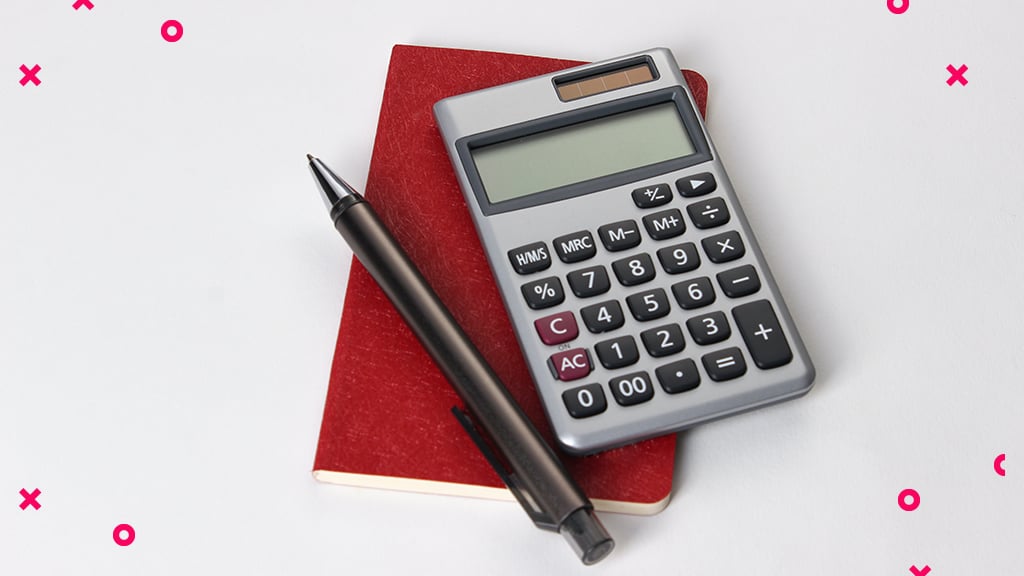
If celebrities, athletes, and reality TV stars have taught us anything, it’s to pay your taxes. Punishable by jail time and exorbitant fines, evading your taxes simply isn’t worth it. For most people, state and federal taxes are automatically deducted from their paychecks without a second thought.
But once you start selling used panties online or engaging in other forms of self-employment, it’s your responsibility to calculate and pay your taxes. Failure to do so could result in some hefty fines and time spent in handcuffs (and not in a good way!).
So if you’re ready to make money selling used panties and other goodies online but aren’t sure how much you’ll make or owe the government, keep reading. In this article, we’ll provide a comprehensive guide to paying taxes on selling used panties so you can earn a sexy side hustle without worrying about being penalized or persecuted.
Most people don’t know the answer to this question since their taxes are automatically calculated for them. When you work for an established company that uses a payroll system to compensate its employees, you’ll be asked to fill out a W2 form. This form details how much money you make, how much money is withheld for taxes, and how many dependents you have. Based on this information, the payroll company automatically calculates and deducts what’s owed.

There are two common forms used to calculate taxes – a W2 and a 1099. W2 tax forms are issued by your empower, whereas 1099 forms are used by independent contractors, freelance workers, and those who are not payroll employees. Since selling used panties online is an independent effort, you’ll need to fill out a 1099 form to report all of your income. The good news is that you can also make deductions based on your overhead and expenses to reduce how much you owe. (More on this below.)
But filling out a 1099 form isn’t enough. You also need to schedule quarterly payments to the government to avoid late fees or falling behind on your payments. While adopting a payment schedule isn’t a requirement, it’s strongly encouraged to help avoid any complications or penalties. Create a payment schedule where you send a certain amount to the government every three to four months.
Now, you may be wondering, “How much should I send?”. While there’s no specific number or amount since what you send is based on your annual income, the average freelancer is responsible for 15.3% of their earnings. If you’ve ever compared this to a W2 form you may have noticed it’s much higher than what an employer takes out. That’s because as an independent contractor, you’re considered both the employer and the employee and therefore, are required to cover all of the associated fees and expenses.
So, as lucrative and rewarding as selling used panties online can be, it’s important to remember that the more you make, the more you owe.
Some of the most successful panty sellers and used panty marketplaces are found in the United States and the UK. If you’re living and selling in one of these countries, there are certain rules and regulations you need to know. Taxes differ from one country to the next, which is why it’s important to understand your obligations depending on your region.

In the US, independent contractors and freelance workers (yes, that means panty sellers, too!) pay two types of taxes – income tax and self-employment tax. If you earn more than $400 per year from your freelance work, you’re required to pay self-employment taxes. You’re also required to report all of your earnings for the calendar year, even those that exceed $400 (which, let’s hope they do!).
As a general rule of thumb, panty sellers living and working in the US should set aside between 25% and 30% of every check or payment to use toward paying income and self-employment taxes. This forced savings guarantees that you don’t find yourself in a financial pickle come tax time with no savings to cover your required payments.
Self-employment taxes in the US total 15.3% of your total income from freelance work. This money goes toward covering the two largest portions of taxes in the US – Social Security and Medicare. If you fill out a W2 form and work for an established company, you would split these costs. For example, your employer would pay 7.65% toward Social Security and Medicare and you’d be required to pay the other half. As an online panty seller, you’re your own boss which means you need to allocate funds that cover the entire amount (or 15.3% of your gross annual income). In some cases, your employer portion of the self-employment tax is considered deductible.
Using the Schedule SE tax form on the US IRS website, you can calculate your self-employment tax and then make quarterly payments using a 1040 form. It’s also important to note that this self-employment tax is in addition to the regular income taxes you owe. That’s why it’s recommended you set aside between 25% and 30% of your income to be safe. If you’re unsure what your annual income will be and you want to get a jump on things, use last year’s total to estimate what you’ll be responsible for this tax season.
If you live and work in the UK, you don’t need to pay taxes unless you meet and exceed an earning threshold of £12,500 from April 6th of the previous year until April 5th of the current year. You also get a tax-free trading allowance of £1,000 every calendar year. This means that £1,000 of your earnings are automatically considered deductible and part of your overhead expenses and costs.
So, what does this mean for you? As much as you want to succeed in selling used underwear online and make the most money possible, if you make less than £12,500, you’re not required to pay taxes on your income. Once you hit this threshold, though, you’ll need to fill out and file a 1099 tax form. To put this into perspective, you’d need to make over £1,000 per month, consistently, to meet this minimum threshold which, if you ask us, is pretty substantial income from selling your used undergarments.
It’s also important to note that if you have other outside sources of income, you’re more likely to surpass the £12,500 threshold within a given calendar year. If so, the first £1,000 you make is considered your tax-free trading allowance and essentially treated as “free” money that you aren’t required to claim or pay taxes on.
There are two ways to calculate your income and paying taxes on selling used panties in the UK and both involve using your gross income. First, take your gross income from the year and deduct the £1,000 tax-free trading allowance. Whatever’s left over is subject to UK taxes. Tax rates differ from one person and profession to the next so be sure to consider what tax bracket you fall into when calculating your tax rate.
Second, you can take your gross income amount and deduct your overall expenses and fees. These include everything from postage and shipping costs to your Internet bill, the cost of stocking your panty shop, and website membership fees. Whatever is left over after deducting these expenses is subject to UK income tax at your designated rate.
In order to make the most and pay the least (while still remaining compliant and legal), use whichever method makes the most sense for you and results in the highest take-home.
Now that you understand how to get a rough estimate of what you’ll owe the government off your online used panty sales, let’s talk business. Because, after all, selling used underwear and other sexy items on sites like Sofia Gray works just like any other online business.

You need to promote your page, engage with customers, produce quality items on a regular basis, and deliver on your promises. All of these factors go into building and establishing a positive reputation online and generating as much income as possible.
When you approach selling used panties as a business, it’s easier to see how and why you have to pay taxes on your earnings. It also helps you keep track of your work, income, and write-offs.
When it comes time to file your taxes as an independent contractor, documentation is your best friend. To avoid confusion, headaches, and penalties, you need to keep impeccable records from day one. Document every detail about every sale you make. Important information includes:
Depending on the payment system you use, certain companies like PayPal offer users a 1099 form for filing at the end of the fiscal year. These documents are often based on your total income so it's still in your best interest to keep your own records. These printouts also won’t provide some of the details mentioned above. They simply list money in and money out. If you want to keep track of all the details of your panty sales (and you should), it’s best you come up with a system yourself. File and organize them by month so you can easily find and refer to them as needed.
Deductions and write-offs are expenses that you incurred in the process of building your business. And just because selling used panties online is an unconventional way of making money, it still runs like a business and your earnings are still eligible for deductions. In the UK, this includes the £1,000 tax-free trading allowance that already comes off the top of your earnings. In the US, it includes everything from the cost of your underwear and shipping containers to the laptop and Wifi you use to list your items for sale.
Some sellers get pretty creative with their tax write-offs. When it comes to paying taxes on selling used panties, here are some of the most common and acceptable deductions that you can claim when it comes time to file.
While you’re entitled to claim any expenses you incur while building your online used panty business, it’s important to be honest and not get carried away. For example, you can’t really claim your gym membership even if you sell panties you wore to Zumba class. Be reasonable and honest when making a list of eligible write-offs.
Before you launch your used panty shop and have to answer to Uncle Sam, check out these frequently asked questions about paying taxes on selling used panties.

Ultimately, this is a personal decision but it’s recommended that you pay your taxes quarterly, or every three months. The IRS website offers an example payment schedule to help keep you on track and prevent penalty or late fees later on. You can send a 25%-30% payment in April, June, September, and again in January to stay on track.
If you don’t anticipate you’ll earn more than a couple of thousand dollars selling used panties (on top of the income you make from any other work), you can skip the quarterly payments and just report your freelance income when you file your tax return. If, however, you use one of the calculations above and determine you’ll owe more than $1,000 in taxes at the end of the year, it may be in your best interest to start budgeting now and sending the IRS money quarterly.
The IRS website makes it easy to send payments from the bank account of your choosing. Simply create an account, log in, and find the online Form 1040-ES. Once selected, you can choose the amount you want to send and on what date. You can also revisit your account at any point to see a record of your payments.
The whole premise behind selling used underwear online is to make money. And while it would be nice to keep every last penny of your earnings, you do need to claim your income and pay taxes as an independent contractor. But, the good news is that there are ways to lower your freelance taxes and pay less to the government with more going into your pocket.
If you travel for work, you may be able to deduct things like vehicle maintenance, gas, mileage, and travel expenses. This may be rare though when dealing with an online business like selling used underwear, unless you hand-deliver your items to the customer. Other self-employed deductions include home renovations and supplies, health insurance, and education. If you’re unsure whether or not a certain item qualifies as a deduction, check with a tax professional. Most accountants recommend you overpay or overestimate what’s owed rather than underpay and find yourself owing more than you made.
Selling used panties online is a fun, sexy, and interesting way to make money. On sites like Sofia Gray, you can expand your sales outside of just underwear to include things like bras, lingerie, hosiery, and even sex toys.

When tax time rolls around it’s not so much about the type of items you sell but more about how much you sell and how much money you make. The government wants their cut of your earnings, whether it’s from selling used panties, engaging in paid chat services, or shipping your used socks and shoes. Using this guide and an estimated tax calculator, you can be sure to pay the government what they’re owed while still making a profit and avoiding unwanted fees and penalties.
Are you thinking in dabbling in other types of taboo sex work? Check out this post for more legal help.